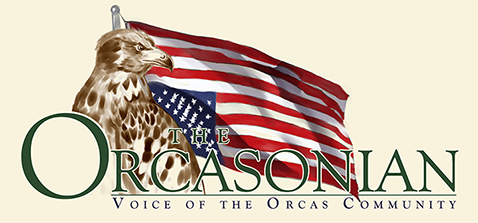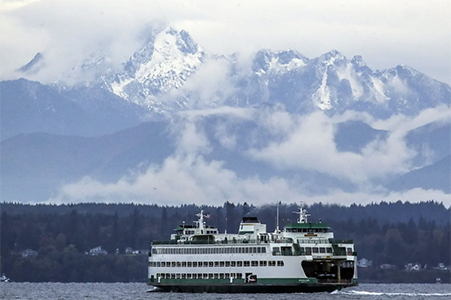||| FROM DAVID SHINSTROM |||
My name is David Shinstrom and I am writing to encourage you to vote yes for the Orcas Health Care District levy lift, proposition 1.
I would wager that there is no one on Orcas who better understands the history of medical care on Orcas over the past 30 years than do I.
A bit of history. I came to Orcas in 1993 to assume the physician role at the Orcas Medical Center. At the time, I was the only physician in the practice managed by Island Hospital. As expected, the practice was operating at a substantial loss over 6 years despite a 5 fold increase in patients revenues. In 2000 it was decided to have a vote for a hospital taxing district. That failed by 47 votes. Island Hospital decided they could no longer operate the practice in the San Juan islands that was being subsidized by Skagit County taxpayers so they cancelled the contract with the Orcas Island Medical Center Association (OIMCA) in 2002.
One of the first actions by OIMCA was to bar me from practicing in the Orcas Medical Center. As a consequence, I established my Orcas Family Health Center practice at the airport center. Again, predictably, both medical practices operated at a loss. The OIMCA shortfall was covered by philanthropic donations, at times up to $400,000/year. My OFHC practice also received donations but the only way to continue the practice was for me to not take a salary for a few years. The OFHC practice did grow to the point where I was able to receive a salary but far below the market value.
Fast forward to 2018 when Orcas taxpayers passed the Orcas Health Care District. For the first time since my arrival on Orcas there was adequate financial support of the medical practice. Stability.
It is well known that operating a rural medical practice is difficult financially. Thus far, the board of the Orcas Health Care District has done an excellent job. Recently, they negotiated a 10 year agreement with Island Hospital, a significant step toward furthering the stability. I am confident the health care district board will continue to be fiscally responsible in managing the needed funds to cover the increased cost.
One final comment. There is misinformation about after hours coverage. The practitioners of Island Primary Care do take calls covering nights and weekends.
One other request, please read the post by Rick Hughes; he provides a fabulous summary of some of the financial issues.
**If you are reading theOrcasonian for free, thank your fellow islanders. If you would like to support theOrcasonian CLICK HERE to set your modestly-priced, voluntary subscription. Otherwise, no worries; we’re happy to share with you.**









I’m confused. The Clinic needs to expand its size and build more buildings because…why? Do we need separate prenatal and pediatric centers and temporary housing for more employee imports? Are we seeking out locals to train and hire? Do we give scholarships for locals to go to nursing and other medical training programs? These seem a lot more cost effective than a levy for further expansion– and a better way to spend some monies.
How do we obtain copies of the ambitious plan being proposed – in detail? Where can we see the contract negotiated that likely hinges on the passage of this levy? Show us a Site Plan for all the new buildings and temporary housing – exact specs. Where? When? What? How much forest will OIHCD need to destroy to make way for more things we may not even need, and are not required to do? The forest bits adjacent to Orcas Center, South of the Clinic, and especially the east side with those lovely Sweet Gum trees planted by Robin Kucklick decades ago for the original Med Center landscaping- will all of that be bulldozed? We should know and have available all of these things to consider BEFORE voting, not vote blindly to give wiggle room to a plan too nebulous to know what exactly will happen, along with destruction of the last of the mature forests along Mt. Baker Rd. Too late to put copies of everything at the Library now, with elections a week away.
Why/how is this levy decided for all of us by a Board of Directors from Skagit County? Don’t we have our own board of directors? Why aren’t they listed on the website? Who’s the Community liaison? Everything is so hidden and hard to find on the website. Are the Skagit BOD mandating this for us, or did our own BOD decide this for us? How is the money debt divided between Skagit, Fidalgo, and San Juan Counties, and for what improved or new services? Again, do we need them, considering the inherent risk of living on an island?
What’s expected of OIHCD when it signs the new negotiated contract? Without full disclosure of all of this in one place where we can access it publicly, why should we support this levy? This levy hinges on a new proposed contract. When does the existing contract expire – and what’s the worst that can happen if the levy fails to pass? Are we putting our community at the mercy of Skagit County BOD?
It would be wiser IMO for OIHCD to contract with Peace Health hospital SJI for the services and equipment that they already provide and we don’t have. Did OIHCD tlook into this?
The mission statement in our voters pamphlet presumes to bring all practitioners under one umbrella – but the doctors with their own private practices on Orcas left of their own free will – do they even want this? Why are we trying to make a hospital district out of a public health care district? What is the actual need for that, and the difference?
The voters pamphlet also states that because of the pandemic, costs have increased by 30%, so it argues that we need this levy. There were 600 new billionaires “made” by profiting from the pandemic and the ensuing the land grab. Big Pharma got more legal protections and total immunity from liability and accountability for damages– that had to cost a lot! Something’s not adding up to turn my no into a yes.
Hoping David Shinstrum or others could provide some factual history on whether the Orcas Health District attempted to contract with Peace Health when the district was approved by Orcas voters in 2018. Peace Health manages nine hospitals in Washington, Alaska and Oregon and numerous medical clinics in Western Washington. .It’s based in Vancouver, Washington., including the hospital at Friday Harbor.
I ask this not because Orcas Island needs a 24 hour hospital, but because the cost to San Juan Island taxpayers for their 8 bed hospital, trauma center, cancer care, and assisted living facility is nearly equal to what the proposed levy for Orcas Island taxpayers will be paying next year if the proposed levy is approved … about $3.5 million a year.
On San Juan Island, the hospital district also manages EMS services, which on Orcas is managed by the Fire District. San Juan taxpayers fund the EMS services in addition to the hospital district, and by state law the EMS funding can be used only for EMS expenditures, so those San Juan tax district funds are not supporting the hospital.
Orcas Island could use an assisted living facility such as they have on San Juan Island, and that could legally be a small profit center for a rural clinic.
The Orcas clinic commissioners have stated that the contract with Island Health is the only option, but just asking the question historical question if Peace Health was at play to be the “mothership” for the Orcas Health District, and if so, why they declined?
Comparing Orcas Island (OI) to San Juan Island (SJI) is always interesting if not illuminating. We are #1 in land area by 5 acres, but usually come in #2 in most economic comparisons. For one, we have roughly 1200 fewer permanent residents.
Peace Island Medical Center was built in 2012 with the help of a $10 million grant funded by San Juan Island Community Foundation (SJICF). That is the equivalent of $13 million in 2025 dollars. SJICF has also contributed $4 million since 2012 to support the SJI Hospital district.
The SJI tax base supporting health care levies for 2025 is $6.6 billion. These levies include SJI Hospital District 1 ($3.3 million) and SJI Hospital EMS ($0.78 million) for a total of of $4.1 million.
The OI tax base for health care levies for 2025 is $4.8 billion, essentially 2/3 of the comparable SJI tax base. The current OI levy is $2.0 million, plus some part of the Fire District #2 levy. If the levy is passed, the Hospital District levy would increase to $3.3 million, roughly 3/4 of the SJI levies, not including the EMS part of the Fire district levy.
Takeaways:
1. The importance of leadership in raising and investing donor resources cannot be overstated. SJICF and SJI donors were prescient by investing in health care facilities. OICF contributed to the construction of the OI Medical Center, but I don’t know how much. It is obviously smaller than PIMC, and is now barely adequate to meet the forecasted additional service improvements.
2. Clearly health care is a higher priority for SJICF than OICF. OICF does fund the free dental clinics that are held periodically on OI.
3. It is interesting that SJICF reports $9 million in assets under investment, while OICF reports $26 million. Why such a difference? My limited awareness of OICF accounting indicated that 55% of the assets are funds owned by local nonprofits and a significant part of the remaining funds are held for a multiplicity of donor-advised funds. Apparently the donors of such funds are not fond of investing in healthcare facilities.